The STEM Jobs Gap and Minority Youth Engagement


Want to learn more? Join TriplePundit, SAP and our esteemed guest panel for a special Twitter chat about STEM Inclusion on APRIL 14 at 8 a.m. PST / 11 a.m. EST - at #SAPYouthChat.
According to the Bureau of Labor Statistics, as many as 1.4 million new computer science jobs could soon be available in the United States, but only 400,000 students will be enrolled in such programs at the nation’s universities. This disparity is often referred to as the STEM gap. Only 1 out of 10 high schools in the U.S. offer computer science programs. And, in a sign that the national education system is far from modernized to meet the demands of the 21st century economy, 25 states still do not even allow computer science classes to count toward high school graduation.
Computer science-related jobs are growing at twice the national average, but there is a huge gap between STEM (science, technology, engineering and mathematics) related jobs and the number of young people who are studying to qualify for them. And this gap is hitting urban and minority students much harder than other populations. Expanding STEM education opportunities in minority communities is one key to helping young people rise out of poverty and filling the job gap.
To that end, #YesWeCode, a joint partnership of Dream Corps Unlimited and Thrive Networks, advocates for STEM inclusion and wider access to computer science education across the country. Co-founded by Van Jones, Amy Henderson and Cheryl Contee, the nonprofit ties technology and social justice together, and emphasizes the expansion of computer science education for urban and at-risk youth.
Established last summer, #YesWeCode already has a bevy of corporate partners, including Facebook, Ford Motor Co., Google and Comcast. Its overall mission is to act as a “catalyzer and connector,” and lead in raising awareness about computer science education among students. Part of the organization’s agenda involves a robust schedule of hack-a-thons. The most recent event, which took place in Detroit, aimed to reach students with latent skills but who otherwise would not consider a career in computer programing.
“Detroit has a reputation as a ‘bankrupt’ city, but its renaissance is driving a growth in technology,” says Michael Nobleza, deputy director of #YesWeCode. “I was inspired by the resilience that the city is showing."
Nobleza was also inspired by watching students work together with Google engineers and developers "during this weekend of pure science." He added, "[I] hope that these kids can achieve their dreams and capitalize on future opportunities.”
The Detroit hackathon was typical of the social enterprise events #YesWeCode has organized in order to share the opportunities of coding that usually bypass too many students. Although it's often self-promoted as being a “diverse” industry, Silicon Valley and the tech sector still have a reputation for being overly white — and the same goes for the venture capital world that supplies the funding often needed to get these companies off the ground. By teaming students with mentors from the corporate partners, #YesWeCode aims to bring this industry alive to students and showcase the excitement of coding.
At Ford’s Resource and Engagement Center in southwest Detroit, dozens of middle school students from five metro Detroit middle schools competed for US$30,000 in prizes. The winning project was a mobile app designed to improve communications between parents and schools. These hackathons are not just about computer programming, however: Students also had to pitch their projects in a “Shark Tank” style format to a judging panel, giving competitors a a taste of how start-ups get funded in general.
As part of #YesWeCode’s goal of training 100,000 minority coders, the organization also works with schools to expand computer science education opportunities. One of the most ambitious projects is the NYC Web Development Fellowship, which partners with the Flatiron School in Brooklyn to run an intensive 22-week fellowship designed to train New Yorkers in the skills necessary to launch a career in Web development.
#YesWeCode plans to work with more corporate partners to raise the millions of dollars needed to fund fellowships like that of the Flatiron School, Nobleza says. Programs like this are important, says Nobleza, “because first, there are so many existing programs like that of the Flatiron School that are doing great work to fill the education gap, but just needed exposure. And second, they need to be connected, and that is where #YesWeCode comes in.”
More is planned in the coming months as #YesWeCode seeks youth hungry for renewed opportunities, whether they are students who did not complete college or lack the technical skills to enter the ever-changing job market.
This July the organization will sponsor the second annual hackathon at the Essence Festival in New Orleans, which again will connect young programmers and mentors from the business world.
While the U.S economy is on the mend, the improvements still have not necessarily trickled down to the youngest workers. Youth unemployment hovers around 12 percent, even when many good-paying jobs remain unfilled. Boosting computer science education is one way to boost the prospects of young adults who are often connected to technology, but not necessarily connected to the job opportunities that technology can offer.
Image credit: #YesWeCode
Cradle-to-Cradle Tackles the Fashion Industry


There are many reasons to be down on today’s fashion industry: water pollution, toxic chemicals, landfill waste, garment worker exploitation in places like Bangladesh, Cambodia and China – the list could go on. Yet, as we’ve read in our series on sustainable fashion, innovative groups and sustainably-minded apparel brands offer glimmers of hope that this $1 trillion industry is slowly changing course. The recent launch of the Cradle to Cradle Products Innovation Institute’s Fashion Positive offers another reason to stay positive about the future of this industry.
Launched in 2014, Fashion Positive aims to retool the entire global fashion supply chain and help create more sustainable materials, processes and products. The initiative works with fashion brands, designers and suppliers to continuously improve how clothes are made by looking at the following five categories: material health, material use, renewable energy, water stewardship and social fairness.
Applying this Cradle to Cradle design methodology developed by Dr. Michael Braungart and William McDonough, the initiative’s first task is to build a Materials Library of sustainable materials and suppliers that fashion designers can access to make more environmentally and socially positive products.
Already, the initiative is collaborating with brands such as Stella McCartney, G-Star RAW, Bionic Yarn, Loomstate and Belk department stores.
Focus on the positive
While most of the sustainability conversation in the fashion industry focuses on going to zero – zero waste, zero water, zero energy, zero toxins – Fashion Positive wants to create more good instead of just less bad.
Rather than launch a shaming campaign, Fashion Positive will highlight sustainable fashion innovations and inspire the industry to follow suit. One way it aims to be a positive force in the industry is to spur, document and feature the next generation of apparel and accessories that are designed for the circular economy.
"Fashion is a constant moving train," said Lewis Perkins, senior vice president of the Cradle to Cradle Products Innovation Institute. "What we decided to do is go way back to the building blocks of fashion. The idea is not to point out the bad, but to stimulate innovation and showcase positive stories so the rest of the industry can say, 'That might actually fit in my company.'"
A matchmaker for sustainable materials
Sustainable textile innovation is nothing new: Some apparel leaders (Patagonia, the North Face, Volcom, Levi’s) have developed product lines made with recycled plastic bottles, plant-based fibers, renewable fabrics, and other pre- and post-consumer waste. But the use of those textiles has not yet been systematized into global supply chains, nor brought to scale.
Fashion Positive’s mission is to not only play matchmaker between sustainable materials and global brands, but also to encourage Cradle to Cradle thinking among all key stakeholders along the material’s supply chain and product’s lifecycle.
To make a T-shirt from recycled plastic water bottles, for example, a company might simply want to focus on how to turn that plastic into polyester to make its product. Fashion Positive wants to get that same company to think bigger: How was that plastic originally made? What chemicals are in it? How can the plastic fibers be repurposed in a way that’s safe for humans and the environment? And how can the new product be designed to be seamlessly reused, recycled or upcycled?
"We see that companies won’t get to those higher levels unless we go way upstream to the guy who makes the plastic bottle, so that we can turn the bottles into the sweaters, and the fleece, and the blankets and so forth," said Bridgett Luther, president of the Cradle to Cradle Products Innovation Institute. "As people start to push for those higher levels, the whole industry can identify what the problematic materials and processes are and find solutions."
Systems thinking
What Fashion Positive is building is an ecosystem of brands, innovators and organizations working to transform the apparel and textile industry. Of course, this transformation will not happen overnight, nor will Fashion Positive do it alone.
One of the initiative's goals is to build bridges between players within its community to further propel the adoption of materials and manufacturing innovations. The initiative’s Innovation Fund, for example, provides funding to select suppliers to develop forward-looking materials that will be shared with Fashion Positive’s larger community. The initiative has also partnered with organizations such as the Sustainable Apparel Coalition and the NRDC’s Clean By Design to harmonize and optimize sustainability efforts within the fashion industry.
"In the fashion industry, you don’t want to get left behind," Perkins said. "We’re banking on that desire to be on the cutting edge and part of what’s next. Sustainability is definitely what’s next for the apparel industry."
That sounds like a positive thing to me.
Image credit: Fashion Positive
The Evolution Of Seafood Sustainability

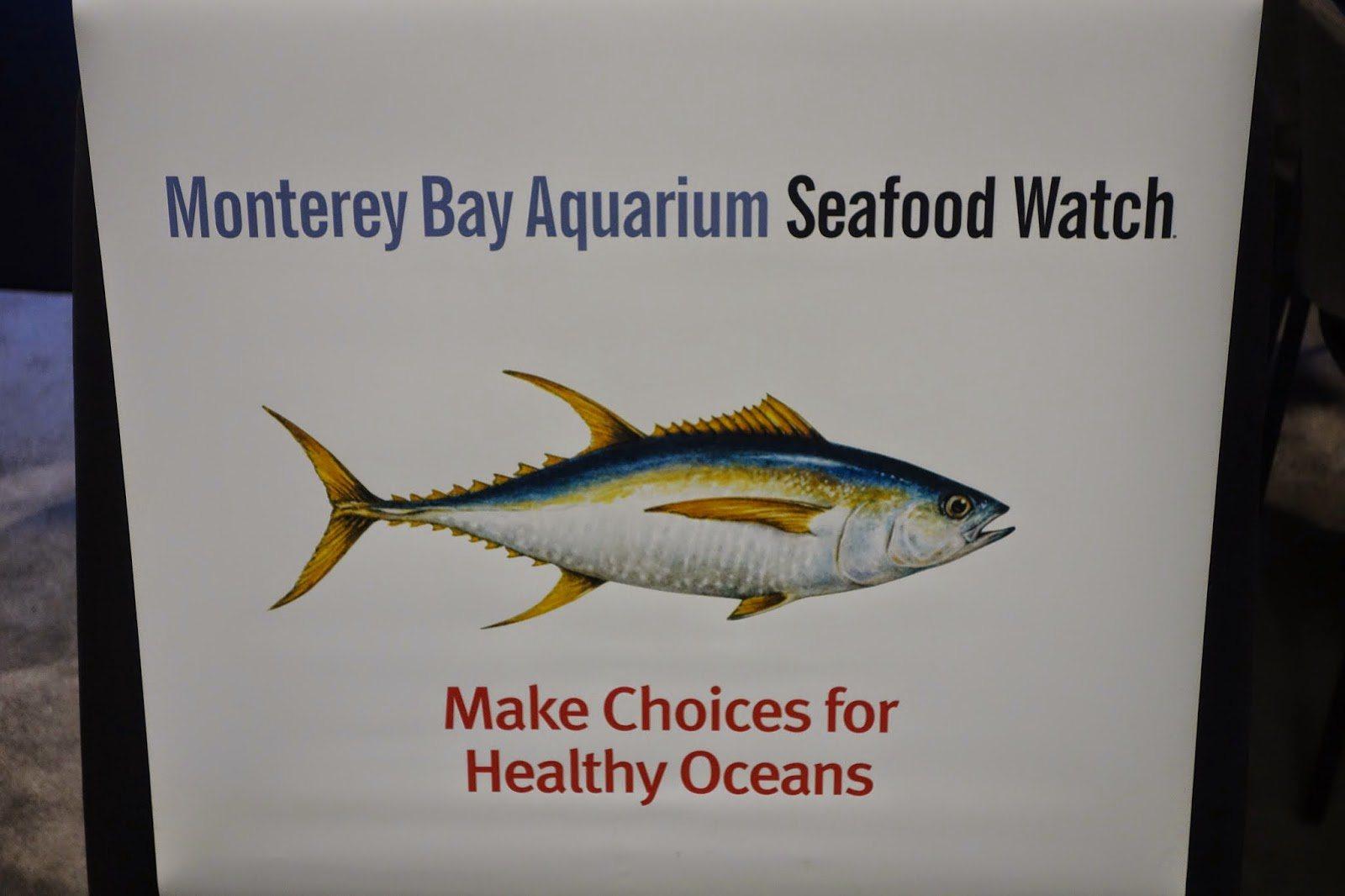
Editor's Note: This post is an entry in the 5th Annual iPura Tweet & Blogfest at Seafood Expo 2015. It originally appeared on The Passionate Foodie. Read all of the Blogfest entries here.
By Richard Auffrey
While walking down the many aisles of the Seafood Expo North America (SENA15), enjoying seafood samples, you cannot fail to notice all the attention given to sustainability. I've already mentioned the prevalence of seafood sustainability at the expo. While many of the exhibitors tout the sustainability of their products, in the darker corners of the hall, there are items which are more questionable, such as shark fin, though fortunately only a single exhibitor had that item. Each year, SENA seems to become more an more sustainable.
Besides the seafood purveyors, you'll also find organizations devoted to sustainable issues, such as Aquaculture Stewardship Council, CleanFish, Fish Choice, Global G.A.P., Marine Stewardship Council, Monterey Bay Aquarium, Seaweb, Trace Register and others. These groups provide a wealth of information concerning seafood sustainability, and are more than willing to share all they know. Besides the exhibitors, there was also a Seafood Sustainability track in the conference sessions, presenting five different seminars (two fewer than last year) on sustainability-related issues.
Over the last five years, during my most intense immersions into the expo, there has been a clear evolution in seafood sustainability, a constant move forward. This is not a new evolution and has been occurring ever since the idea of seafood sustainability was first broached. In some ways, the evolution of seafood sustainability has been quicker and more significant than that occurring in any other food industry. For example, early aquaculture saw serious problems, such as pollution and disease, yet many of those problems have been resolved. The problems of factory farms that raise chickens, pigs and cows have not been addressed as quickly or as successfully as aquaculture.
The relatively rapid evolution of seafood sustainability has unfortunately been an obstacle in some regards to the average consumer. Due to the complexities of sustainability, and its rapid changes, consumers get overwhelmed and fail to properly understand the issues. Instead, they often tend to rely on sensationalist media reports, usually outdated, mentioning the dangers of seafood. But consumer education is starting to be addressed, as well as the development of ideas which will make it much easier for consumers to understand what is most important.
As my own contribution to correcting the misconceptions of consumers, I want to address some of the key points of the sustainability issue as it presently stands, pointing out some of its evolution as well.
1. Seafood sustainability is vital
This is a fact that has not changed over the years. If anything, it has become stronger as new studies are conducted. As I mentioned in a previous post, by the mid-2040s, it is projected that the world population will grow from 7 billion to 9 billion, requiring us to double our food supply. The United Nations also reported that 90 percent of wild fisheries are being harvested at their sustainable limit. Without seafood, we won't be able to feed the world's growing population. In addition, the extinction of species and the destruction of their environment could have cataclysmic consequences for us all.
Sustainability in all industries is a vital element, and the seafood industry is definitely not an exception. Consumers need to consume sustainable seafood, and contribute to our future. There is no valid argument that sustainable seafood is unnecessary.
2. Seafood sustainability still isn't a major consumer concern
Despite the vital nature of seafood sustainability, it still is not a high priority for the majority of consumers. Various seafood purveyors told me that their customers rarely ask about sustainability. Other seafood articles have repeated this sentiment, indicating that consumers care far more about cost, ease of prep and taste than sustainability. However, those same consumers, in other studies, indicate that they equate sustainability to quality, but they just are not motivated sufficiently to opt only for sustainable seafood.
What helps to drive sustainability in the marketplace is that there is a small yet vocal and powerful minority of consumers who want seafood sustainability. They are the ones who demand to know the source of the seafood they purchase, who question their restaurant servers about sourcing. Retailers are listening to these people, even though they are a minority, as they understand that the number of consumers seeking sustainable seafood is growing, even if it is slow. They see the future, knowing that the consumer base is evolving, getting more educated about these issues. Hopefully, in the near future, a majority of consumers will be concerned about sustainability.
3. Seafood sustainability isn't an either/or issue
No one is 100 percent sustainable, and as Michael Tlusty, the director of ocean sustainability science at the New England Aquarium, said: Anyone claiming otherwise is merely ego. Sustainability is a journey, and everyone falls somewhere on the spectrum, hopefully moving closer to an ideal destination. At the Marine Stewardship Council meeting, it was noted that even when their fisheries received sustainable certification, they continued to work toward improving their practices, trying to become even more sustainable. Every seafood-related organization needs to constantly endeavor to better themselves, to improve any aspect which is less than perfect, even if they will never reach that ideal goal.
Sustainability is often about trade-offs: a balancing of competing interests. For example, though the Maine lobster fishery is considered sustainable, it is also an industry that is very energy intensive, far more than many other types of fisheries. The industry needs improvement, despite being sustainable in one sense. Consumers must learn not to be too judgmental about seafood sustainability, and understand that no one is perfect, and those dedicated to working hard toward sustainability deserve their support.
4. Seafood sustainability is a complex issue
In understanding something, starting with its definition is often a good beginning. With sustainability, though, there is no single, agreed-upon definition. Tania Taranovski, the director of the sustainable seafood program at the New England Aquarium, previously noted that with sustainability, "we are trying to do too much with one word" -- oversimplifying a very complex issue. As such, there has been an evolution for some away from that term, choosing to refer to it instead as "responsibly sourced" seafood. This growing movement could potentially be the wave of the future.
Determining whether seafood is sustainable or not depends on a plethora of questions, including where the seafood was harvested, how it was harvested, who harvested it, the health of the specific fishery and so much more. Few consumers have the inclination to ask their local seafood purveyor or restaurant the necessary questions to determine the sustainability level of the seafood they wish to purchase. Fortunately, the evolution of seafood sustainability has seen some potential solutions to this consumer confusion.
5. Seafood sustainability is about trust
To combat consumer confusion about seafood sustainability, consumers need to rely on trust and allow experts to indicate which seafood is sustainable. One important way to provide such information is through third-party certifications, such as that of the Marine Stewardship Council and Aquaculture Stewardship Council. Such organizations ask the necessary questions and take it further through a thorough examination of the issues, ensuring the sustainability of any fishery they choose to certify. For consumers, all they have to do then is to look for a certification label or logo on their seafood. It couldn't be much easier. However, consumers must first trust these organizations,
That element of trust extends to other seafood companies, restaurants, markets or more. Consumers need to rely on trusted people to determine what is sustainable seafood. I have often heard chefs tell me that the first step for consumers is to find a trusted seafood purveyor. Consumers can rely on some elements of the media, friends and word of mouth to help determine who is worthy of their trust. I have previously written about seafood businesses which I believe are worthy of your trust. Having that trust makes the issue of seafood sustainability much easier for consumers.
6. Aquaculture is the future of seafood sustainability
Some consumers have a knee-jerk reaction against aquaculture. It is a strange double standard, though, as they might refuse to eat farmed salmon but will gladly partake of factory farm chicken or pork, both which are far more questionable than farmed salmon. Consumers have been overwhelmed with negative media depictions of farmed fish, and they often don't understand the realities. During the last 40 or so years, aquaculture has made significant strides in technology and progress, and it continues to do so all the time. Many of the criticisms lodged against aquaculture are no longer valid, yet those criticisms continue to circulate.
Approximately 50 percent of the seafood in the world now comes from aquaculture, and that percentage is likely to grow in time. As I mentioned earlier, our population is growing, and the only way we can feed the additional billions will likely be through additional aquaculture. Land-based agriculture already uses 70 percent of our water supply and 30 to 40 percent of our land, so there is little room, if any, for growth. As 90 percent of our wild fisheries are at their peak, there is little room for growth there either. Aquaculture, though, is not at its peak, and its potential is quite higher. Consumers need to understand that aquaculture can be sustainable, that it constantly improves, and that it is necessary to feed future generations.
7. Seafood sustainability is about diversity of species
Most Americans are boring. Consider that although there are more than 100 seafood species available in U.S. markets, a mere six species account for 91 percent of the seafood consumed here. There is an abundant bounty of available seafood species, but many Americans won't venture out to try all of these delicious and interesting species. By consuming such a small number of species, we put undue pressures on the stocks of those fish, causing sustainability problems. It's easy to resolve this problem by Americans simply expanding their palates and eating other, less common species.
You might have heard about "trash fish," though some in the seafood industry cringe at that term: It refers to those species which Americans rarely eat and which fishermen find difficult to sell. However, many of those species are delicious, and people would enjoy them if they only gave them a chance. I've written before about a local effort, Red's Best Seafood, to make those less common fish available to consumers. As I walked the aisles of SENA, I saw a wide variety of seafood which will end up on local store shelves and on restaurant menus, so there is hope that Americans can break out of their boring seafood eating habits. You should also check out this new article in the Wall Street Journal about this very issue.
8. Seafood sustainability should include a social element
Initially, seafood sustainability was primarily about the fish and their environment (the water). The concern was whether there were sufficient stocks of a particular fish, or whether fishing gear was damaging the bottom of the sea. As this type of sustainability became more prevalent and as it started becoming more commonplace in the marketplace, people started to ask whether there was more to sustainability. Some sought a new competitive edge, while others were truly concerned about expanding the scope of sustainability.
Now, more and more seafood organizations are talking about sustainability and social issues, especially after all of the publicity last year from the Thailand scandal concerning slavery and the seafood industry. Some third-party certification bodies, such as Aquaculture Stewardship Council, have social issues within their sustainability criteria. In time, it is very likely that all of these certification groups will include social criteria. It's no longer sufficient to care just about the fish and the oceans, but you need to be concerned about the people involved, too.
Besides extreme cases like those in Thailand, there also needs to be a concern for local fishing communities and their economic well being. There needs to be a balancing act between strict fishing regulations and protecting the livelihoods of fishermen. It is far from an easy task, and the important point is that we need to consider these social issues in seafood sustainability discussions.
I'm sure that at next year's SENA, I'll see a further evolution of the issue of seafood sustainability. There will be more positive change, more efforts to resolve existing problems. I'll be there to learn what has changed, and what the future holds. Will you be there too?
Image credits: Richard Auffrey
Richard Auffrey is a life-long resident of Massachusetts, a licensed attorney, and has been involved in food and wine writing for about nine years. Beside my food, wine, saké & spirits blog, The Passionate Foodie, Richard has also written a food & wine column for the Stoneham Sun newspaper. In addition, he's been published in other periodicals, including the Beverage Media, Drink Me, Boston Scene, North End Scene, and the Valley Patriot. He has also been a freelance contributor to the Medford Patch and Melrose Patch.
ALEC: 'We're Not Climate Change Deniers!'
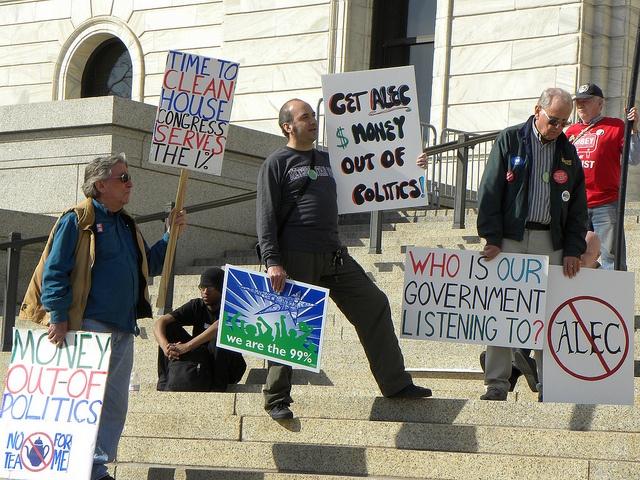

Have you ever heard the old saying about violins playing? Well, cue up the violins playing those sad songs. The American Legislative Exchange Council, commonly known by its acronym, ALEC, would appreciate it.
The organization is sick of being called a climate change denial group. It has even threatened to sue, and sent letters to two organizations, reports the Washington Post.
Both Common Cause and the League of Conservation (LCV) received letters from ALEC. The letter sent to Common Cause came from the law office, Webster, Chamberlain and Bean, and asked the organization to “cease all activities that misrepresent ALEC’s positions and activities.” The letter went on to declare that “ALEC does not deny climate change.”
The letter to Common Cause mentions ALEC’s policy on climate change. The policy does admit that “human activity has and will continue to alter the atmosphere of the planet,” which “may lead to demonstrable changes in climate, including a warming of the planetary mean temperature.” However, the policy also states that “such activity may lead to deleterious, neutral or possibly beneficial climatic changes.” It casts doubt on a scientific consensus stating that “a great deal of scientific uncertainty surrounds the nature of these prospective changes.”
DeSmogBlog created a website to expose ALEC’s climate change agenda. The website, created in partnership with various nonprofit organizations including Common Cause, exposes the three ways that ALEC “promotes climate change denial and blocks progress.” Those three ways are its speakers, its agenda and its funders. Let’s look at the first: The site lists a number of quotes by people who spoke at annual meetings and conferences. One of them is Craig Idso, the founder, former president and current board chairman of the Center for the Study of Carbon Dioxide and Global Change. “CO2 is not a pollutant. It is a benefit. It is the very elixir of life,” Idso said at an ALEC conference last December.
Now, let’s look at ALEC’s agenda, namely its model legislation. The organization’s Environmental Literacy Improvement Act is designed to “enhance and improve the environmental literacy of students and citizens.” Or so it claims. Perhaps the true desire behind the model legislation lies in two clauses: “not be designed to change student behavior, attitudes or values,” and "provide a range of perspectives presented in a balanced manner." A number of states were introduced the legislation, and some of them have even passed it. The teach-both-sides approach is basically designed to plant doubts about climate change.
Last but certainly not least, let’s look at ALEC’s funders. On the list of funders are fossil fuel companies, including ExxonMobil, Chevron, Peabody Energy, Koch Industries and the American Petroleum Institute. These are companies that are largely responsible for the greenhouse gas emissions causing climate change.
Given ALEC’s clear denial of climate change, why is the organization sending letters to Common Cause and LCV? Over 100 companies have left ALEC in recent years, including BP, which is the latest company to leave. Or as David Willett, LCV’s senior vice president for communications, says: “They clearly have realized that their approach is becoming politically toxic.” And clearly it no longer pays to be seen as a climate change denier even if you are one of the biggest.
Image credit: Flickr/Fibonacci Blue
Obama Links Climate Change with Public Health


This week is National Public Health Week. One of the events commemorating the occasion was a roundtable discussion on Tuesday at Howard University's College of Medicine, where President Barack Obama joined U.S. Surgeon General Dr. Vivek Murthy and EPA Administrator Gina McCarthy to discuss the link between climate change and public health.
This linkage was not widely known, but presidential adviser Brian Deese cited a study by the American Thoracic Society which revealed that 65 percent of doctors surveyed felt that climate change was already relevant to patient care, with even more saying it would be in the future. Among the connections listed were: chronic disease severity due to air pollution, allergies from plants and mold, and severe weather injuries.
This pairing is a difficult sell here in the U.S., in part because a number of the most severe health impacts hit other areas disproportionately. For example, the World Health Organization (WHO) estimates that climate change will cause 250,000 additional deaths annually between 2030 and 2050. "Most will likely perish from malaria, diarrhea, heat exposure and under-nutrition," the organization said. These are not things we see a lot of here in the U.S. But rising temperatures and increased flooding might bring increased exposure to tropical diseases like malaria to northern climates while also accelerating the life cycle of the disease.
A 2013 Time magazine article makes the case that medical professionals may be the best messengers for global warming.
"Framing global warming as a public health issue rather than as an environmental or national security one produces the most emotionally compelling response among people, since it focuses on the immediate implications a warmer climate would have on people's lives," Time contributor Courtney Subramanian wrote in the article. "This strategy also has the benefit of providing a sense of hope that the problems can be addressed and avoided, if action is taken early enough."
Air pollution is the largest environmental threat to public health. In 2012, it was responsible for one in eight deaths worldwide, according to Dr. Maria Neira, director of the WHO's public health and environment department. And while climate change is responsible for certain types of air pollution, such as that associated with increased wildfires, a much broader correlation exists between the sources of air pollution and the greenhouse gas emissions that cause climate change because these emissions are a root cause of both. These are parallel outcomes: Taking action against climate change by reducing smokestack emissions from power plants and tailpipe emissions from cars and trucks will also help reduce air pollution.
This is an important point, because while it might be confusing to say that climate change causes air pollution, it is fair, and perhaps more clear, to say that the many of the things that cause climate change also cause air pollution.
The next greatest public health threat is under-nutrition. In 2012, it was the cause of death for over 3 million people. Climate change is playing a more direct causal role here, as rising temperatures and shifting rainfall patterns have wreaked havoc on agricultural productivity. Not long ago this was something that only happened to people far away, but this reality has now come home to roost in California’s Central Valley.
As the impacts of climate change loom closer, we can begin to see some of its less obvious features more clearly. This is a good thing, since it will tend to widen the circle of those that take an interest in the subject, some of whom will also take action.
Image credit: Trinity Care Foundation: Flickr Creative Commons
Plastic Recycling Suffers from Lingering Low Oil Price
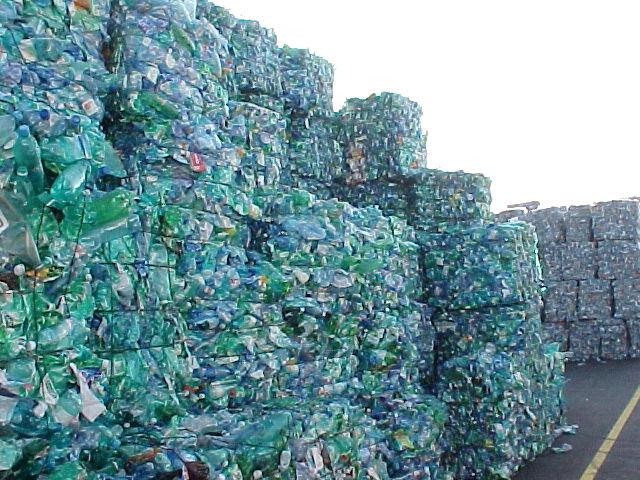

While solar and wind power continue to become more competitive in price to fossil fuels, even despite decreasing oil prices, the same is not holding true for plastics. The sudden drop in fossil fuel prices over the last several months has sent plastic recyclers scrambling to save their businesses. From China to Quebec, recycling companies have been struggling to stay in the black, even though more municipalities are mandating recycling for either waste diversion purposes or to stay compliant with a local sustainability plan.
Recycled plastic, particularly PET (polyethylene terephthalate), the plastic of choice for beverage companies, already had its challenges because of perceptions its quality does not match that of virgin PET. But the business case for using the recycled option made sense when the cost of recycled plastic was less than that of its virgin alternative. According to a plastic industry trade publication, virgin pet costs about 67 cents a pound as of late March; the recycled option now is at 72 cents a pound. At the beginning of this year, virgin PET was priced 15 percent higher than the recycled material.
More companies, including Unilever and P&G, are doing what they can to incorporate more recycled plastic within their supply chain. But overall, if recycling is no longer cost effective, more municipalities may stop mandating curbside collection of plastics—as what occurred over a decade ago when New York City suspended the recycling of glass and plastic. Because the northeastern United States has diminishing landfill space, plastic recycling could still remain the norm, but do not expect the same in other regions of the country where land is still plentiful.
And despite the landfill tax across the pond in the United Kingdom, plastic recycling companies are closing their doors as the price of oil has cratered. Those worried about a surge of plastics ending up in landfill, and the concurrent environmental risks, can fret all they want. But when recycling companies are bickering over a half cent or cent difference per pound, the stubborn pact persists that there is simply far less of a market than there was a year ago.
The effects are being felt across the world, and other factors are not helping. The strong U.S. dollar, according to another plastics trade publication, has pushed China, the largest purchaser of American recyclers, to source such materials elsewhere.
Recycling has its environmental benefits, but most companies are in it for the money, which explains why in recent years the sector’s total value reached $100 billion annually. Surely, fossil prices will rise again, but in the meantime, it may just be up to large companies to use their market prowess to keep recycling a viable business for the long term. And businesses and governments will have to work together to find ways to treat plastic like a precious resource, not just pesky waste.
Image credit: Matthewdikmans
Ecologic Containers Reduce Plastic Waste and Build Local Economies


With less than 10 percent of all plastic in the United States recovered from recycling, clearly we can do more about the approximate 32 million tons of plastic waste that is generated annually. But as the cost of virgin plastic decreases because of the lower cost of oil, any future boost in recycling this material, which is about 13 percent of all municipal waste, is not looking too hopeful in the near future. One company in northern California, however, has found opportunity into churning cardboard and newsprint into containers that work just as well as their plastic alternatives—while providing small town jobs.
Ecologic Brands was founded in 2008 by Julie Corbett, who was tired of all the waste from plastic jugs and cartons that her family was generating. She became inspired by a paper fiber tray that encased a new cell phone she purchased, along with the milk pouches typically sold in Canada, Europe and Latin America. A new bottle, and company, was born.
Manufactured in the San Joaquin Valley town of Manteca, 75 miles east of San Francisco, the eco.bottle containers come in three sizes and can hold dry or liquid products. According to Corbett, the bottles are overall made from 70 percent old corrugated cardboard and the rest is sourced from old newsprint. For liquid products such as dish soap, a plastic pouch can be inserted into the containers. The paper shell is not laminated, nor does it contain any plastic. Its design is a stark contrast to conventional milk and juice cartons, which comprise paper, plastic and link layers laminated together, and are therefore difficult to recycle.
Corbett explained that when recyclables are baled after collection, the paper shell of an Ecologic container crumbles, allowing it to easily separate from the #4 plastic LDPE (low density polyethylene) pouch. “But even if the pouch goes all the way to the paper processing facility, it will float to the top during the recycling process, and then it will be separated by skimmers,” says Corbett.
Companies looking for ways to make their products more sustainable (and more appealing) to customers may want to consider moving towards paper-based containers. Plastic resin per ton is about $1,000 to $1,300 a ton; recycled plastic resin is not that much cheaper. Recycled cardboard runs at about $150 a ton, while old newsprint fetches about $70 for the same amount of material. Corbett said the number of Ecologic containers that can come from a ton of recycled paper is about the same if they were derived from plastic. While she would not disclose the cost of Ecologic’s containers, she insisted they were comparable to their plastic competitors, and that as the company scores more customers (currently the company has about 20 including Seventh Generation, Nestlé and Purina), she expects economies of scale to drive prices down even further.
For Corbett, however, her company does more than provide a more environmentally friendly product. Ecologic is also about renewing local economies, especially since the divide between wealthy cities such as San Francisco and Los Angeles, and smaller cities in towns in the San Joaquin Valley, is widening—a trend ongoing across the country. “The paper industry sustained a lot of small towns for generations, and for many years our nation was built on small economies,” says Corbett. “What’s really great about paper is that it really is a national product it can create economic growth.
Paper doesn’t have to be in huge cities by large ports like Houston, which is one of the few entries in which imported oil comes into this country. Paper can be based in small town America and thrive, the way it did in small towns for decades, as it did throughout New England, the South and the Pacific Northwest,” continued Corbett. Corbett continued to argue that the plastics industry, because of logistics, tends to be concentrated in areas that are hubs for the petroleum and natural gas industries. Case in point: Ecologic’s manufacturing is in Manteca (population 72,000) because of its proximity to the Interstate 5 corridor, which offers bountiful supplies of corrugated cardboard due to the agricultural sector.
Corbett expects her company to roll out new products in the future, such as a new molded fiber bottle that is 100 percent recycled cardboard and newsprint—including the cap, which is also made from paper. Once seen as passé, could paper make a comeback thanks to companies such as Ecologic? “Economic development should be part of this sustainability conversation, and that is what is so beautiful about paper,” says Corbett.
Image credits: Ecologic Brands
The Unsustainability of Extended Payment Terms
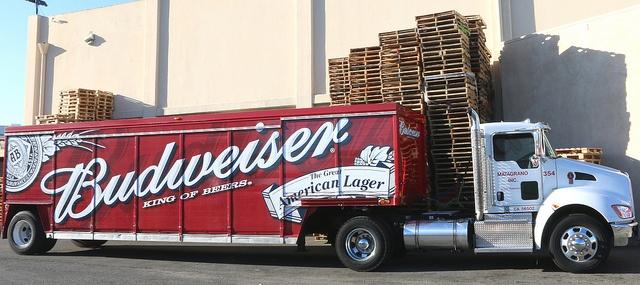

According to the New York Times, the major multinationals behind some of our favorite foods -- like Mondelez, Mars, Kellogg, Church & Dwight, Anheuser-Busch InBev and Heinz -- wait 90 or even 120 days before paying their suppliers.
These same companies often consider themselves to be socially and environmentally responsible.
I would claim, however, that a company applying these extended payment terms is not a responsible one.
Additionally, while large companies believe they gain from these extended payment terms in the short term, they hurt their resilience by doing so and increase their exposure to risk in the long run. Therefore, these companies and their stakeholders should address supplier payment terms as not just a moral issue, but also as a strategic one.
This trend of large companies extending supplier payment terms goes back to the financial crisis of 2008 when credit became scarcer and more expensive, leading companies to adopt more aggressive cash management practices to stay afloat. Still, it didn’t stop when things got better. As Wall Street Journal reporter Serena Ng explained in 2013: “What began as a way to preserve cash when markets dried up a few years ago has become a means of freeing up money to fund expansions, buy back stock and support dividend payouts at a time of lackluster sales growth and shrinking profit margins.”
In other words: What started as a survival strategy quickly shifted into a sort of a cash-cow strategy, making a lot of money for large companies. How much money?
“Procter & Gamble’s move to extend its payment terms to 75 days in 2013 has probably added $1 billion so far to its cash flow, according to one estimate," reporter Stephanie Strom wrote in the New York Times this week.
What’s the explanation companies provide for extending their supplier payment terms? “Extending our payment terms allows us to better align with industry practice and ensures we compete on a level playing field, while simultaneously improving transparency and predictability of payment processes,” Valerie Moens, a spokeswoman for Mondelez, the multinational confectionery, food and beverage conglomerate, told the New York Times.
Another response came from Kris Charles, a Kellogg spokeswoman, who told the Times that extending payments to 120 days “gives Kellogg and our suppliers more flexibility to manage our businesses effectively through better cash flow management.”
Not surprisingly, some suppliers beg to differ. Stephen Brock, the owner of Supplied Industrial Solutions, which provided equipment to Anheuser-Busch InBev, told the Times that AB InBev’s decision to move to a 120-day period “… really had a dreadful effect on our bottom line …You still have a payroll to make, your own suppliers to pay, electric and other utility bills — they can’t wait four months for payment.”
It’s important to mention that, according to the Times report, this trend has not been applied in most cases to raw materials suppliers and thus is mostly hitting suppliers providing services like packaging, advertising, equipment and so on.
At the same time, I believe it doesn’t make much of a difference. An exploitation of a supplier is unacceptable no matter if it is a small farmer or a mid-size packaging or equipment company. In both cases this is an irresponsible practice.
It is even more infuriating given what these corporations write in their corporate social responsibility (CSR) reports. For example, Mondelez write: “We expect our suppliers to live up to the same standards we have set for ourselves …” If this was the case, wouldn’t we expect Mondelez to arrange for supplier payment terms that are similar to the ones it negotiated with its customers, which according to the Times is likely to be 30 days?
Or how about Kellogg, which writes in its Supplier Code of Conduct Resource Guide: “We seek business relationships with suppliers that are committed to responsible sourcing, while demonstrating our values and actively supporting our company’s vision and purpose. Responsible sourcing (or social accountability) has five main aspects: Business integrity; quality, health and safety; labor standards; sustainability and land use; and management practices.” Shouldn’t fair supplier payment terms be part of business integrity?
The problem though is not just the companies’ behavior. In a way this is a reflection of much broader problems: the markets’ short-termism and the failure of companies to acknowledge that they are responsible not only to their shareholders, but also to a broader set of stakeholders.
This race to the bottom is encouraged by Wall Street “pushing companies to extend terms because their competitors are,” explained Harvard Business School Professor V. G. Narayanan. The problem though is that this race couldn’t last very long – suppliers are not banks but businesses. And if these payment terms hurt their ability to operate and make them more fragile, then it will eventually hurt the large companies they work with as well -- making them less resilient. As we enter an era where the world becomes more volatile, uncertain, complex and ambiguous, this risk potential gains even greater importance.
As Andrew Winston explained in an article in Harvard Business Review: “Innovation and adaptation are long-term activities, and maintaining a three-month horizon inhibits the creativity and investment needed to build resilience.”
He says that company leaders need to challenge Wall Street orthodoxy, and I couldn’t agree more. And fighting the market pressure to extend supplier payment terms to 90 or 120 days could certainly be a good first step.
Companies that don’t understand this hurt both their suppliers and shareholders, and certainly shouldn’t claim to be responsible. And if they do make such claims, it’s our job as stakeholders to remind them what responsibility is actually about.
Image credit: TruckPR, Flickr Creative Commons
Can 'Test-Tube Meat' Cure Hunger and Agricultural Pollution?


'Test-tube meat' may soon be coming to the modern-day Happy Meal. It sounds strange, but scientists are closer now than ever to successfully producing lab-grown meat at the price of a gourmet burger.
Dutch researchers from Maastricht University in the Netherlands shocked the world two years ago when they presented their $330,000 burger grown from in-vitro cattle stem cells. Since making the big debut, scientists have been able to drastically cut the production costs of their frakenburger down to a measly $11.36.
Now, the only question left to ask is: Even with a new $11 price tag, who will be brave enough to eat it?
Scaling production and viability for artificial meat is not the only factor at play here. Beyond mastering a meat-like taste that consumers will buy into, some of the tenets behind the research and experimentation with animal stem cells seek to provide the innovative answer to some of our nation’s greatest challenges: alleviation of hunger and environmental degradation.
The World Health Organization (WHO) predicts that feeding a growing population (expected to reach 9.6 billion people by 2050) will be top of mind over the next few decades. Though WHO reports that our nations produce enough food to feed nearly every human being on the planet, distribution of said food -- coupled with social barriers and the perils of poverty in all societies -- require that farmers (or scientists) invest in creative thinking and planning on how we will grow and preserve enough food to feed the world.
Conjointly, global meat production tells of the existing detriments our food supply has on our environment. In a 2013 article, Time magazine reported: “There might be no other single human activity that has a bigger impact on the planet than the raising of livestock.”
A full-scale study published by researchers in the Proceedings of the National Academy of Sciences of the United States of America reveals:
“Livestock production impacts air and water quality, ocean health, and greenhouse gas (GHG) emissions on regional to global scales and it is the largest use of land globally. Quantifying the environmental impacts of the various livestock categories, mostly arising from feed production, is thus a grand challenge of sustainability science.”
It remains unclear, however, whether the researchers behind the test-tube meat phenomenon seek to serve the poor or the epicure in this scenario. Chances are, an $11 patty will remain out of reach for many, despite the cruelty-free, resource-friendly attributes it boasts.
Despite the many foreseen roadblocks around lab-grown meat, next on the menu could be chicken. Reuters recently reported, “Professor Amit Gefen, a bioengineer at Tel Aviv University, is in process of a year-long feasibility study into manufacturing chicken in a lab, funded by a non-profit group called the Modern Agriculture Foundation which hopes "cultured meat" will one day replace the raising of animals for slaughter.”
While you may not find poultry grown in a petri dish to be appetizing, the benefits of engineering our food could prove to be a solution to agricultural waste and pollution. Innovation is certainly welcomed — even if it means providing unconventional solutions that need to be covered in barbecue sauce before being served to society.
Image credit: James Palinsad Flickr
Urbantech Startups and the Cities of the Future

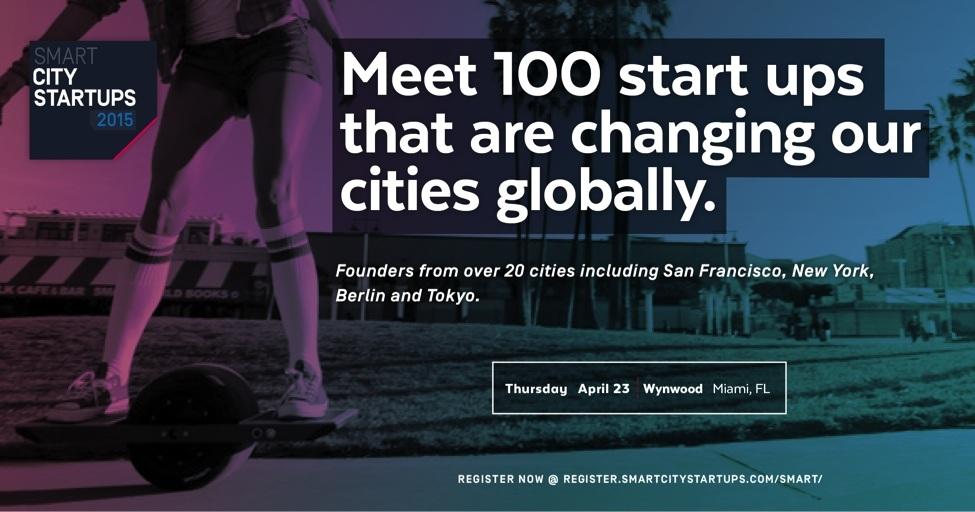
By Shaun Abrahamson
People are moving to cities at an unprecedented rate. The chart below shows how our urban population is forecast to grow, even after quadrupling since the 1950s.
It also shows targets for reducing greenhouse gas emissions that cause climate change (specifically targets set by the European Union for greenhouse gas emissions). Since cities currently account for about 75 percent of greenhouse gas emissions, if we cannot change how we build and operate cities, we have little hope of achieving our climate goals.
Simply put: We need cities to be smart if they are to serve the needs or more people, even as they must shrink emissions.
What is a smart city?
Smart city has come to mean something quite specific -- technology that is sold to local government agencies to enable them to better deliver services. But we’ve noticed that many companies having an impact on cities are selling to businesses and consumers. Startups like Uber, Waze and Nest are less than a decade old but are dramatically reshaping how we move around and how we reduce our energy consumption and footprint.
Over the last 18 months, Urban.Us researched hundreds of startups and created a radar plot of their solutions -- who they sell to and what city problems they solve. We believe we’re seeing a rapid increase in founders and investors who want to solve city problems. For this reason we believe startups are poised to solve many of our biggest city challenges.
Direct energy solutions
It’s very common to see startups working directly on demand-side energy problems. They are trying to answer the question: How do we make more efficient buildings? Take Radiator Labs, for example, which created a retro-fit radiator cover called the Cozy. The Cozy allows you to control temperature in each room by trapping the heat inside its thermal lining. Using sensors placed outside, the Cozy to measure the temperature of the room, fans automatically turn on to push heat out into the room when it’s cold, and turn off and trap heat inside of the Cozy when the room heats up. There are over 120 million radiators nationwide posing a huge opportunity for efficiency.
While a single Cozy may be a simple matter of comfort, when a whole building is hooked up, data from the devices can be used to figure out when the building receives too much heat. From initial pilots, the answer is pretty shocking -- knowing this information allows Cozy to reduce fuel use by 40 percent. Now imagine instead of reducing the amount of energy used by a single building in Manhattan with a thousand homes, how much energy an entire city could save by installing a device like this in just 10 percent of the city’s buildings.
Similarly, Flair Vents allows homeowners to control airflow to different rooms through a smartphone app. Like the Cozy, it uses sensors to automatically adjust the airflow when a room is too hot or cold. Again, this may be a matter of comfort, but imagine how many hotel rooms in South Florida are being cooled at the same temperature whether the room is occupied or not. How much energy could implementing this startup technology in 10 percent of South Florida’s hotels save? Startups like these have the potential to dramatically reduce the carbon footprint of our cities today and in the future.
At this year's Smart City Startups Conference, MeterHero, Rach.io, Lagoon and Zuli will be some of the startups focused on efficiency solutions. Attendees will have the opportunity to see, touch, and demo these efficiency technologies along with 10 others featured in Direct Energy’s smart mobile exhibit.
Indirect energy solutions
Mobility has been hot for a few years. It helps that Uber is one of today’s most valuable private companies. But ride sharing and hailing is not alone in its transformation of mobility options. As the chart below shows, many mobility solutions are seeing exponential growth. Urbanization and connectivity have made it possible to adopt car sharing, bike sharing and new personal mobility devices, not to mention pop-up mass transit and new apps that help us quickly select optimal transit options for specific occasions. In fact, according to Frost & Sullivan, car sharing memberships are forecasted to exponentially grow to around 26 million by 2020.
People are really rethinking how we move people and things around cities. Sometimes convenience or better economics may be the cursory value proposition, the main impact appears to be fewer cars on the roads. This in turns leads to lower emissions. This is crritical, since mobility is one of the biggest contributing factors to climate change in cities. For example, Zipcar estimates that it helps eliminate the need for up to 15 personally owned vehicles and its members have reduced collective emissions by more than 1.4 billion pounds of CO2 in just the past year alone.
This year’s Smart City Startups Conference will have an emphasis on mobility. We will be featuring startups that are building innovative personal mobility solutions like:
- OneWheel, a one wheeled electric skateboard to quickly and easily get you to and from mass transit;
- Whill, an all terrain wheelchair making hard to navigate spaces, like stairs, is a thing of the past for people with disabilities;
- DASH, a hardware plugin tool that syncs to your mobile phone to turn any car into a smart car, unlocking enhanced performance, cost savings and social driving;
- Vinli, a platform that allows to build your own smart car application;
- Placemeter, computer vision technology giving you the power of knowing what a place is like before you get there, to see how crowded a place is, how long the wait is and whether it will get more or less crowded in the next hour;
- ValetAnywhere, an app enabled service that picks up your car, parks it and returns it directly to you;
- Bandwagon, an app to share rides in taxis and car services — matching passengers in cities, at events, and airport taxi lines and many more.
- Transitmix, a new tool to vastly improved public transit design created by a team that used to design space stations.
Mobility vs. location, location, location
One of the most exciting discussions will be “Disrupting Location: How Mobility Startups Reshape Our Cities,” led by moderator Aimee Rawlins, startup and innovation editor for CNNMoney, and featuring Anand Shah, Venture Development at BMW Impact Ventures; Kyle Doerkersen, founder and inventor of OneWheel; Tiffany Chu, co-founder and chief design officer of Transitmix; and Chris Thomas, founder and partner of Fontinalis Partners.
Location is a central theme of how we choose where to live and work. Think about how you get to work. A few years ago you might have asked questions like. Do you need to drive? Is there affordable or convenient parking? How accessible is public transit? Now you might ask: is this area well served by Uber or Lyft? Is Zipcar or Car2go available? What about pop-up mass transit options? You might even ask: Can I Onewheel it?
These are all questions that will impact your decision of where to live. The panel will discuss recent changes to mobility options and what we might expect in the coming years. The explosion of choices, means we might be thinking about the value of location quite differently in coming years. What will this do to the value of different neighborhoods or style of development?
Mobility is just one of the themes at Smart City Startups. We’re excited to bring together so many of the very best startups that are working to make cities better. But this is more than fun for us. We’re anxious to see a lot more innovation from startups because as Anthony Townsend writes, “The coming century of urbanization is humanity’s last attempt to have our cake and eat it too, to double down on industrialization, by redesigning the operating system of the last century to cope with the challenges of the coming one.”
Image credits: 1) Urban.Us 2) Graphic credit: Urban.Us. Data credit: Urban.Us /EMBARQ
By Shaun Abrahamson, a serial entrepreneur, angel investor, author, CEO and co-founder of Urban.Us, an investment fund investing in startups that make cities better. He also produces Smart City Startups, an annual event that hosts 100 startups and over 1,000 people & organizations transforming our cities in the next decade, taking place April 23-24, 2015 in Miami, FL.